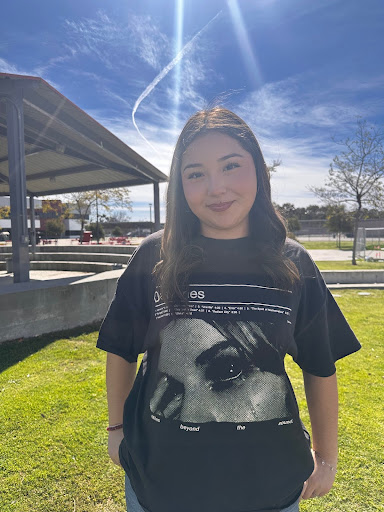Caitlin Clark’s recognition as TIME’s Athlete of the Year marks a historic moment for women’s sports, highlighting her groundbreaking impact on and off the court, and signaling a shift in gender equality.
Caitlin Clark’s historic rookie season with the Indiana Fever in the WNBA proved to be more than just a personal triumph—it was a milestone for the visibility and future of women’s sports. With her dazzling performances on the court, her fearlessness in navigating off-court controversies, and her recognition as TIME’s Athlete of the Year, Clark is undeniably changing the playing field for female athletes. But with the spotlight comes immense pressure, and Clark’s journey is as much about personal growth and navigating the challenges of fame as it is about breaking records.
A Record-Breaking Rookie Year
From her very first game, Caitlin Clark redefined what it means to be a rookie in the WNBA. Known for her bold, confident style of play, Clark shattered rookie scoring records and quickly became one of the most talked-about players in the league. She broke the WNBA’s all-time season record for turnovers but did so while setting the court ablaze with her fearless, high-risk playmaking. “You want me throwing those risky passes,” Clark says with a smile, fully aware that her style comes with both brilliance and mistakes.
Her performance on the court caught the attention of fans and analysts alike, but it also led to one of the most highly anticipated rookie seasons in recent memory. Clark’s combination of athleticism, vision, and confidence has made her a generational talent in women’s basketball—akin to some of the most celebrated players in NBA history. But her rookie season wasn’t all about her record-breaking feats; it was also about how she handled the immense weight of being one of the most visible athletes in the world of women’s sports.
TIME’s Athlete of the Year: A Historic Achievement
Caitlin Clark’s recognition as TIME’s Athlete of the Year is more than just a personal accomplishment—it’s a groundbreaking moment for women in sports. She is only the second female athlete to be awarded this honor, following in the footsteps of gymnastics legend Simone Biles. This is a monumental achievement because TIME’s Athlete of the Year has historically been dominated by male athletes, reflecting the long-standing gender disparity in both media attention and recognition of accomplishments in sports.
Simone Biles, who was named Athlete of the Year in 2021, made history as the first woman to receive this distinction. Now, Caitlin Clark joins that exclusive group, breaking barriers in a male-dominated space and marking a significant shift in how female athletes are viewed and celebrated. Being named TIME’s Athlete of the Year is a recognition not just of individual talent but of how Clark’s influence reaches beyond the court, impacting the cultural and societal landscape. This acknowledgment is a powerful statement that women’s sports are no longer a side story—they are at the center of the conversation.
The Significance of This Accomplishment
Clark’s selection as Athlete of the Year is monumental for several reasons. First, it speaks to the growing visibility and recognition of women’s sports, a field that has historically been underrepresented in mainstream media and awards. By honoring Clark, TIME not only acknowledges her individual success but also brings attention to the broader changes taking place in women’s athletics. The recognition of female athletes like Clark is helping to shift public perception, demonstrating that women’s sports deserve the same level of admiration, coverage, and respect as their male counterparts.
Moreover, Clark’s accomplishment comes at a time when women’s sports are experiencing a resurgence in both popularity and impact. The increasing success of women’s sports leagues, the rising pay and sponsorship opportunities for female athletes, and the larger cultural conversations surrounding gender equality all play a role in shaping this moment. Caitlin Clark’s recognition serves as a symbol of how far female athletes have come and the continued fight for equality and visibility.

Off-Court Challenges and Criticism
With fame comes controversy, and for Clark, this was part of the territory. In the opening game of the WNBA playoffs, a controversial incident involving Connecticut’s DiJonai Carrington and a poke to Clark’s eye became the latest lightning rod for criticism. The incident sparked debate over intent, racial implications, and media coverage. The WNBA Players’ Association publicly condemned the line of questioning by USA Today’s Christine Brennan, stating that the attempt to fuel a false narrative contributed to racist, homophobic, and misogynistic rhetoric. Clark, who believed the eye poke was accidental, supported the union’s stance, calling the interview inappropriate and reflective of a gender double standard.
“If that would have happened in the NBA, do you think people would have shown up the next day and been like, ‘Hey, Tyrese Haliburton, did you poke Steph Curry in the eye on purpose?’” Clark asks, highlighting the double standard female athletes face. This incident revealed the complex dynamics women athletes like Clark must navigate—balancing athletic excellence while contending with public scrutiny, racial undertones, and the weight of being a role model in an often unforgiving media landscape.
A Work in Progress: Clark’s Personal Evolution
Despite the controversies and challenges, Clark has demonstrated a remarkable ability to learn and grow. As one of the most recognized figures in women’s sports, there’s a constant expectation for her to speak out on social justice issues and confront racism, misogyny, and homophobia head-on. Yet, Clark’s approach has been one of measured caution. “I’m probably the most popular player in the league at the moment, and somebody a lot of people turn to to have a voice on this type of stuff,” Clark acknowledges. “But there is real responsibility. I understand that, and I acknowledge that.”
While some have called for Clark to be more vocal and proactive in combating racism within her fanbase, others, like former Fever star Tamika Catchings, believe Clark should be given time to find her voice. “She’s a game-changer on the court,” Catchings says. “But having to be a game-changer off the court and get into the politics part of it, I don’t know if that’s her responsibility.” The sentiment is echoed by Sue Bird, who encourages Clark to embrace her role in shaping important conversations but acknowledges the challenge of balancing personal growth with public expectation.
Clark’s sense of responsibility is clearly evolving. She admits that she avoids social media during the season to protect her mental health, but the growing demands of being a high-profile athlete make it clear she’ll need to navigate these challenges more actively in the future. “I hope we can do a better job as a league of protecting our players and putting better resources around them to make it a safer environment,” she says, echoing the call for structural changes in the WNBA that can protect its players from the vitriol that often surrounds them.
Impact Beyond Basketball
Beyond the court, Caitlin Clark’s impact is felt most acutely in how she’s changed the perception of female athletes in the media. TIME’s recognition of her as Athlete of the Year is a clear sign of how far the conversation around women’s sports has come—and how far it still needs to go. Clark’s celebrity status has helped elevate women’s sports, drawing a broader audience and spotlighting the inequalities that still persist. “There’s also been so many people that are not involved in women’s sports, that are just in the workforce, or whatever they do, and they’re just like, ‘Thank you for what you do for women,’” Clark says, clearly aware of the broader cultural shift she is helping to spearhead.
Her decision to forgo participation in the new 3-on-3 league Unrivaled, founded by Sue Bird and Napheesa Collier, is a testament to her focus on self-improvement. Rather than spreading herself thin, Clark has opted to spend her offseason working on her game, lifting weights, and refining her skills. “I kind of want to just stay out of the spotlight,” she says, knowing that her journey is only just beginning.
A Changing Landscape for Female Athletes
Caitlin Clark’s journey is a microcosm of the larger shift in women’s sports. While challenges remain, her success—on and off the court—signals a changing landscape where female athletes are more than just players; they are powerful voices shaping societal change. Through her play, her responses to criticism, and her evolving sense of responsibility, Clark is helping to redefine what it means to be a female athlete in today’s world.
As Clark continues to push the boundaries of what’s possible on the basketball court, one thing is certain: her legacy is about more than just records and accolades. She’s becoming a trailblazer for the next generation of women athletes, proving that the playing field is not just changing—it’s being completely redefined.

























